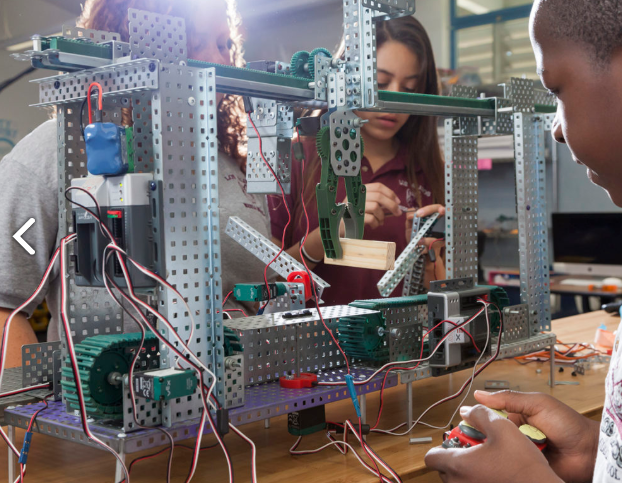For FHSA Families
Connect with Staff
PTSA HOME PAGE
The PLTW Gateway coursework engages students in authentic and innovative experiences that focus on the exploration of the fields of computer science, engineering, and biomedical science. A concrete connection to careers emerges for students as they become aware that the content and skills that they are learning are useful in solving problems in the world around them. The student experience builds student competency and self-efficacy through the scaffolded
application of the design process, experimental design, problem-solving, computational thinking, data analysis, and modeling.

The PLTW Gateway Teacher will:
Dispel common misconceptions about the fields of computer science, engineering, and biomedical science, as well as about the professionals who practice these disciplines and what these professionals do, by bringing awareness to the tremendous diversity in opportunities and the breadth of careers that apply STEM principles.
Promote student interest and curiosity of diverse career opportunities by
providing opportunities for further exploration by students
supporting teachers to facilitate student advocacy in career exploration
Provide opportunities for students to reflect on the knowledge and skills they’re learning and their interests.
Participate in authentic experiences exposing students to career possibilities while inspiring and empowering them to make informed decisions about their career planning.
Develop a growth mindset related to how the changing workplace requires lifelong learning, flexibility, and the acquisition of new employment skills.
Implement pedagogical practices and curriculum knowledge to engage students in authentic and diverse experiences in STEM
Expand and engage in professional learning communities to connect with other teachers, to further develop pedagogical content knowledge, and to share ideas and resources
The PLTW Gateway Student will:
Explore relevant career-related knowledge and skills by:
learning through doing and making meaning
applying what they learn
building transportable skills, such as effective communication, collaboration, critical thinking, creativity, and ethical practice, and showing varied real-world applications
Build competency and self-efficacy through practice and use of conventional processes such as the design process, experimental design, computational thinking, data analysis, project management, and modeling.
Identify and leverage resources, mindset, and support systems that will encourage success in the future.